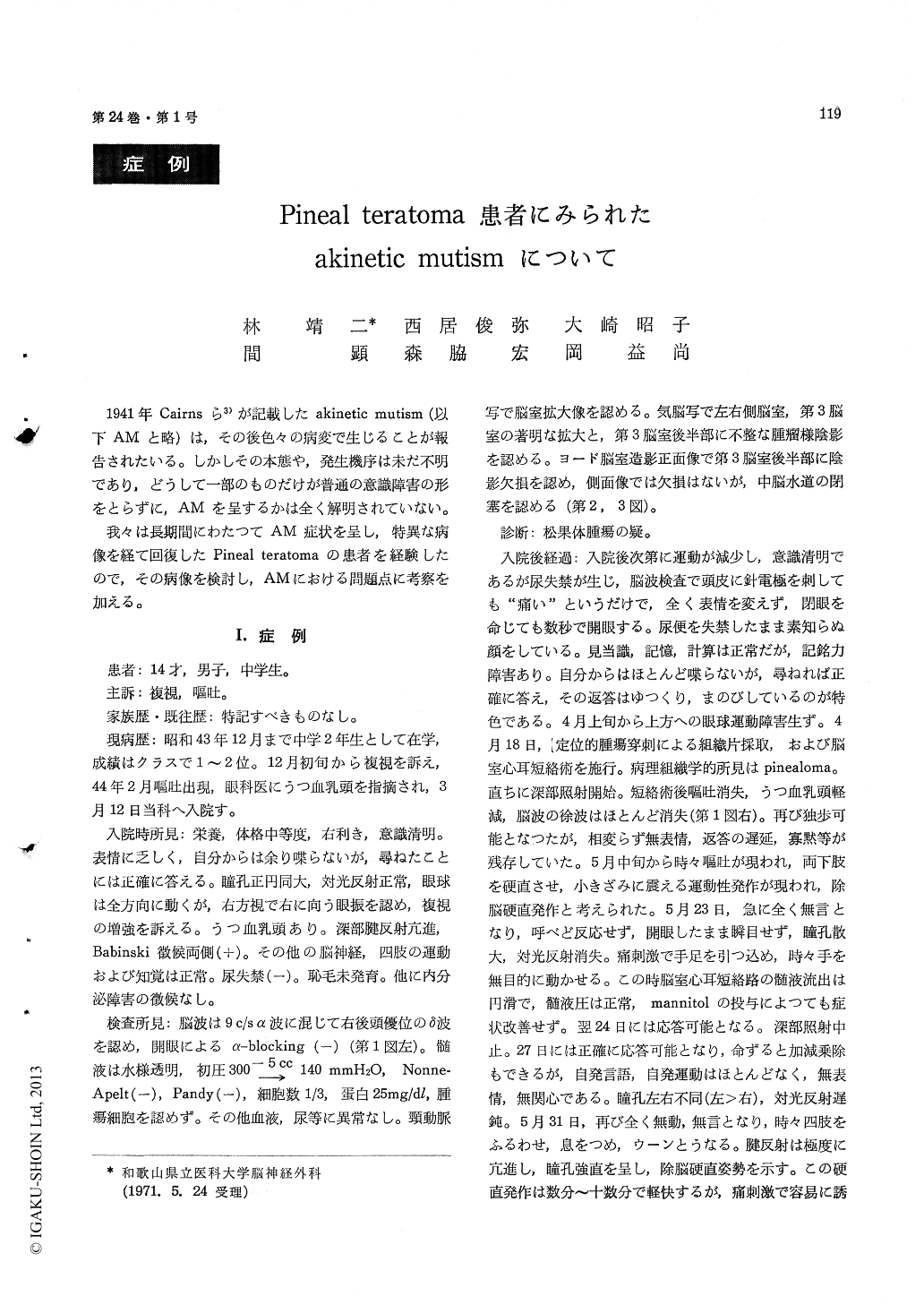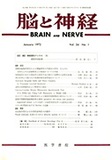Japanese
English
- 有料閲覧
- Abstract 文献概要
- 1ページ目 Look Inside
1941年Cairnsら3)が記載したakinetic mutism (以下AMと略)は,その後色々の病変で生じることが報告されたいる。しかしその本態や,発生機序は未だ不明であり,どうして一部のものだけが普通の意識障害の形をとらずに,AMを呈するかは全く解明されていない。
我々は長期間にわたつてAM症状を呈し,特異な病像を経て回復したPineal teratomaの患者を経験したので,その病像を検討し,AMにおける問題点に考察を加える。
A case of akinetic mutism associated with a pinealteratoma in a 14-year-old boy was reported. Al-though this patient had no gross involvement oflong pathways and his awareness was well pre-served, he would not speek spontaneously andwould not move voluntarily. Involuntary move-ments were not so impaired as voluntary ones. Hehad the loss of emotional expression and inconnti-nence of urine and faeces. There were alwaysassociated with some sings of bilateral pyramidaltract involvement. As the condition progressedthe patient assumed decerebrate rigidity with fre-quent tonic fits which were easily provoked bypain stimuli. Preceding of this tonic fits electro-encephalogram showed high voltage sinusoidal delta-burst in both frontal regions. The intencity ofthis state fluctuated time to time. As his conditionbecame worth, a exstirpation of the tumor wasperformed by Dandy's approach. The tumor was2×2×2 cm large teratoma in the pineal region.
This akinetic mutism lasted for about 8 monthspostoperatively and then improved very rapidly.In its recovery course there was the dissociationof mutism and akinesia. The vocalization andvoluntary movements of the face were more in-hibited than the movements of the extremities.The clinical picture at this time seemed to beaphasia or facial apraxia. In this case there wasdefinite corelation between the progression of akine-tic mutism and sings of ocular impairment, butcomplete paralysis of the 3 rd nerve had neverbeen noted. These facts indicate that akineticmutism in this case resulted from a lesion in themid-brain tegmentum where periaqueductal reticularformation was most vunerable parts and that thedestruction of reticular formation was partial.Akinetic mutism is the state that the cortical func-tions is inhibited by the brain-stem lesion withoutimparirment of the afferent and efferent long path-ways.

Copyright © 1972, Igaku-Shoin Ltd. All rights reserved.


